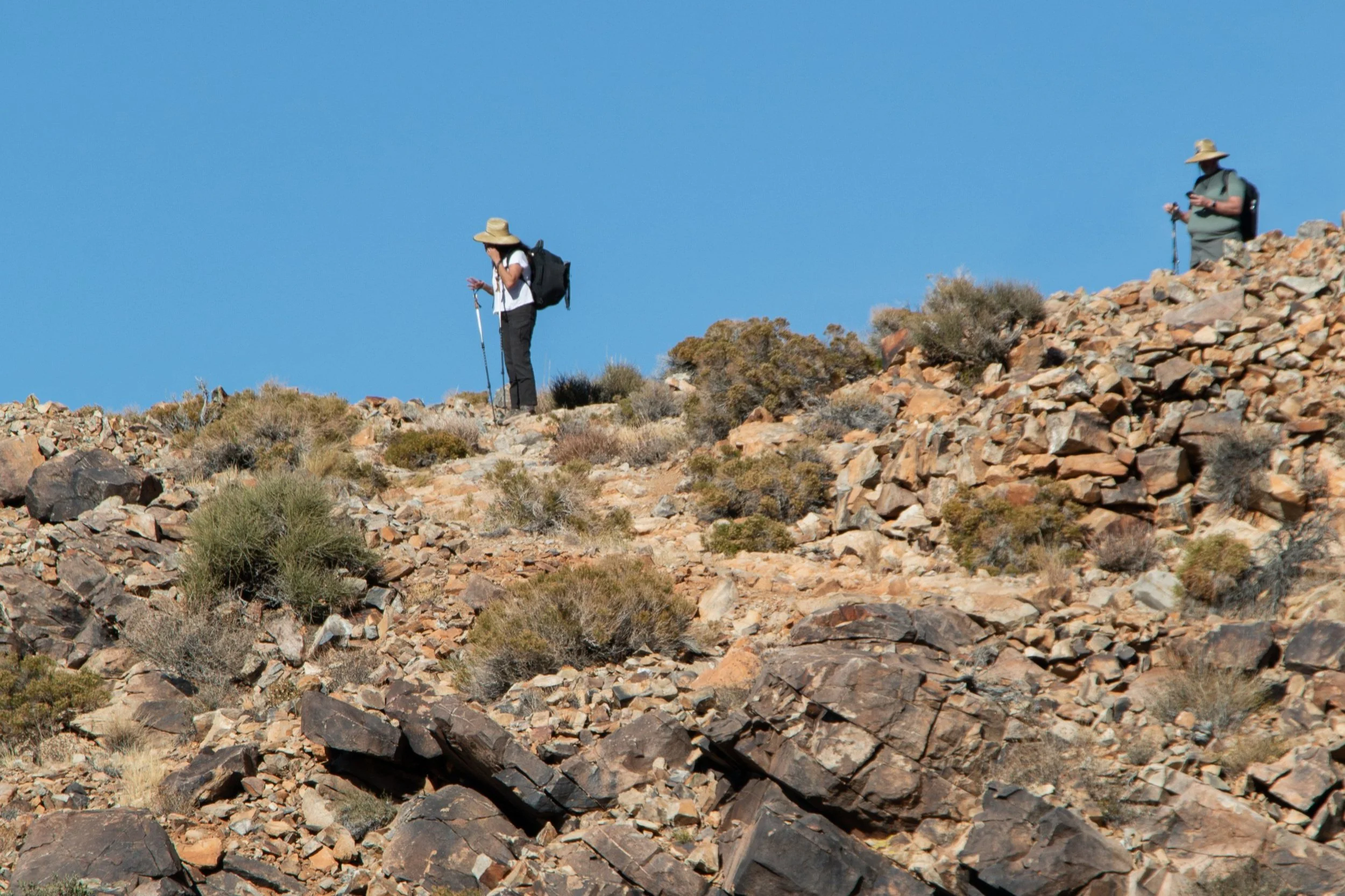Backpacking
Photography © Paul Martinez
In Joshua Tree National Park
Backpacking through Joshua Tree offers a chance to explore remote and untouched areas of the park. However, it requires careful planning and preparation to ensure both safety and environmental protection. Below is everything you need to know before embarking on your desert adventure.
Essentials for Backpacking in Joshua Tree
Water Supply
There are no reliable natural water sources in the park, so backpackers must carry all the water they need.
Plan to bring at least one gallon of water per person per day, accounting for drinking, cooking, and cleaning needs.
Keep in mind that water consumption may increase in hot weather.
Permits for Overnight Trips
A free permit is required for all overnight backpacking trips within the park.
Permits are available at park visitor centers and online.
Backpackers must register at a designated backcountry board near their trailhead, which serves as the starting and ending point of the trip.
Leave No Trace Practices
Joshua Tree’s ecosystem is fragile. To protect it, pack out all waste, including food scraps and trash.
Stay on established trails and avoid damaging desert plants or cryptobiotic soil.
Camp at least 500 feet from water sources and away from trails to minimize environmental impact.
Choosing Your Route and Camp Areas
Joshua Tree allows for dispersed camping, meaning you can camp anywhere that meets the park’s regulations. Be sure to:
Set up camp one mile away from roads and 500 feet from trails.
Avoid camping in closed areas or private property surrounding the park.
Choose campsites that are on durable surfaces, like bare ground or rock, to prevent plant damage.
For those new to the park, consider using well-known trailheads like Black Rock Canyon or California Riding and Hiking Trail to begin your backpacking adventure.
Weather and Safety Considerations
Desert Weather Conditions
The park experiences extreme temperatures—hot days and cold nights—so pack layered clothing to adapt to changing conditions.
Avoid hiking during peak heat hours in the summer (10 AM to 4 PM) to prevent heat exhaustion.
Navigation and Communication
Cell service is unreliable throughout the park, so carry a topographic map and compass.
Let a trusted person know your itinerary and expected return time before your trip.
Carry a first aid kit, flashlight, and extra food in case of emergencies.
Wildlife Awareness
Keep an eye out for desert wildlife, such as snakes and scorpions, especially at night.
Store food securely to avoid attracting animals to your campsite.
Additional Backpacking Tips
Group Size: Keep your group small to minimize impact—12 people per group is the recommended maximum.
Fire Restrictions: Open fires are prohibited in the backcountry. Use a camp stove for cooking instead.
Pets: Pets are not allowed in backcountry areas to protect wildlife and ensure visitor safety.
Getting Your Permit and More Information
Start your backpacking trip by registering at one of the visitor centers or visiting a backcountry registration board at your trailhead. Visit the official Joshua Tree National Park backpacking page for more detailed information on permits, weather updates, and recommended routes.
Backpacking in Joshua Tree offers solitude, scenic beauty, and the chance to connect with nature. With proper preparation and respect for the environment, your trip can be both memorable and safe.

